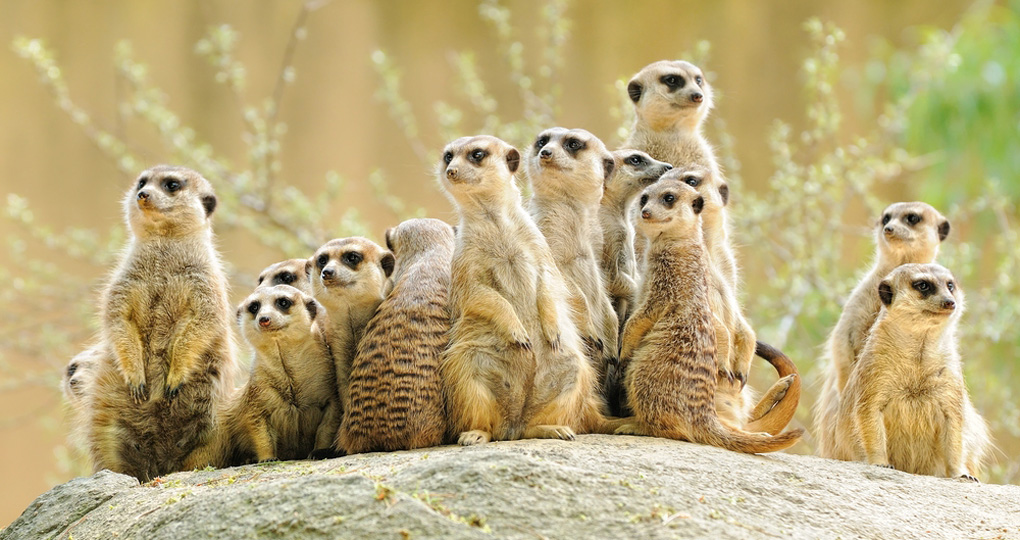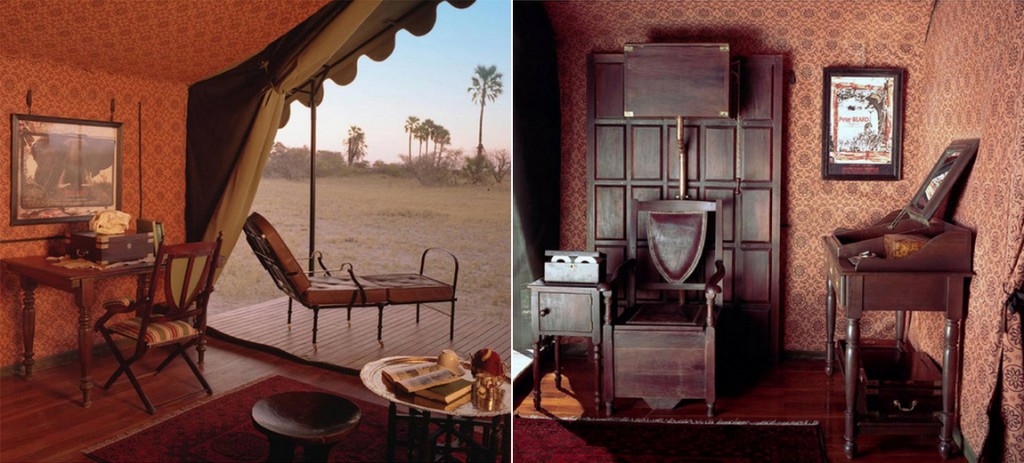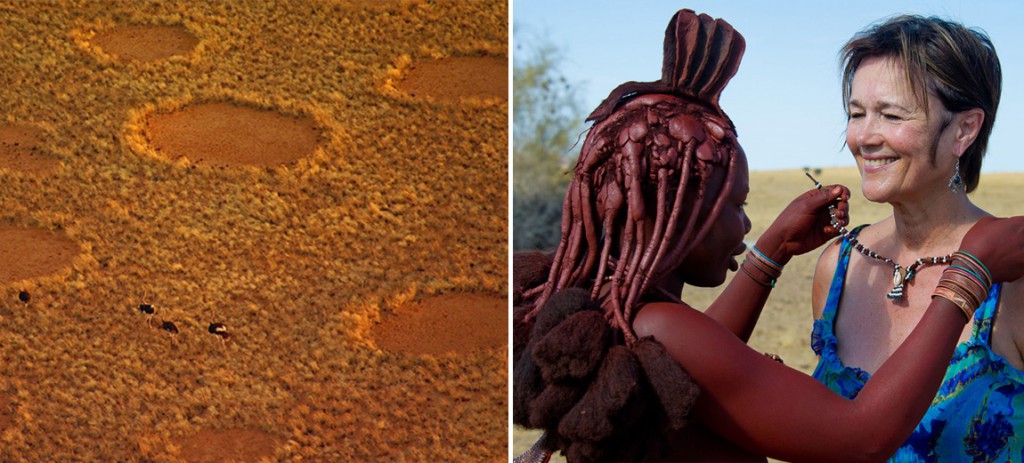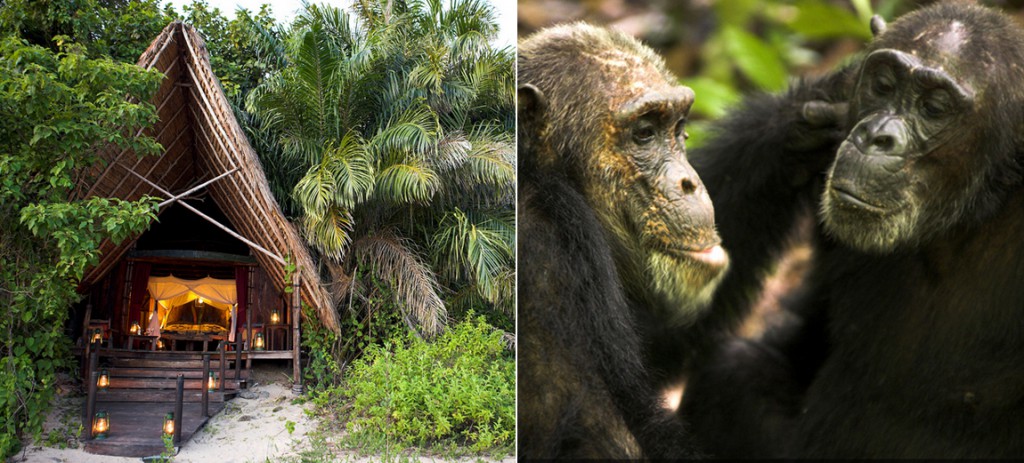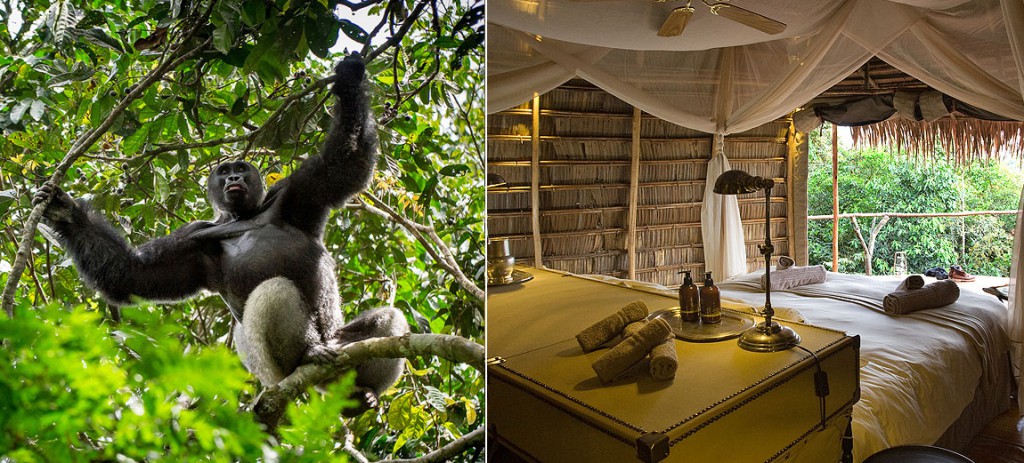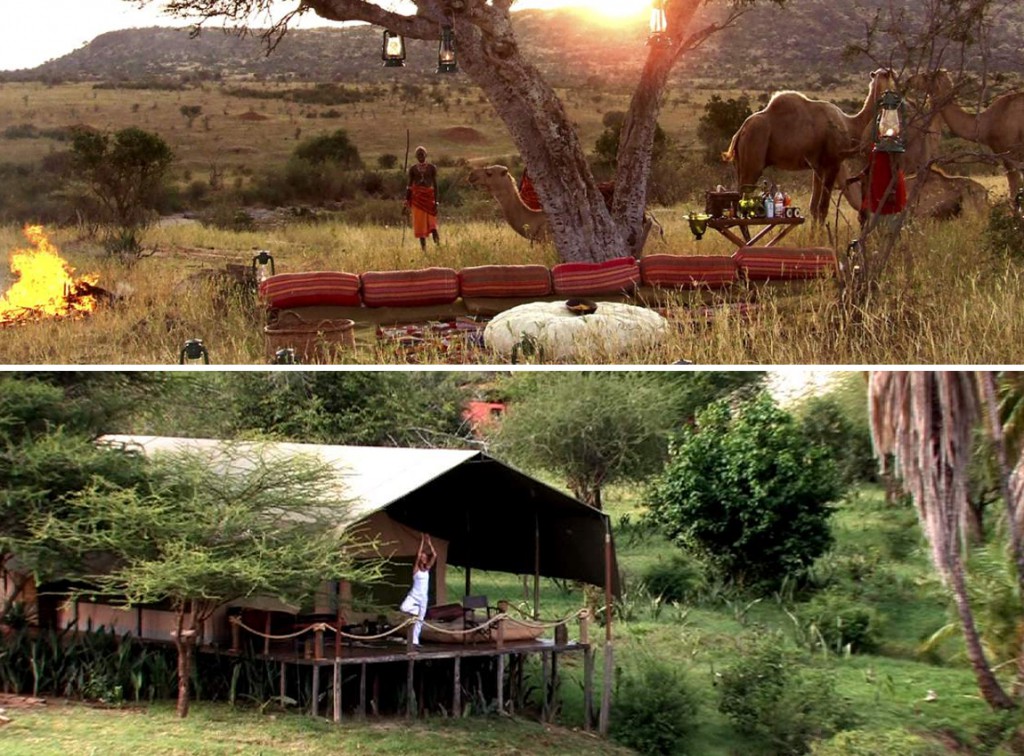5 Unusual African safaris
mis à jour le 14 July 2015 à 18:35Fancy exploring the African landscape in an unusual manner? Take a look at these 5 safaris where you'll encounter anything from elephants, great apes and even meerkats!
Done with the Big 5 and looking for a more 'off-the-beaten trek' experience? From photo-ops with meerkats to sampling freshly-caught sashimi in Bill Gates’ ‘favourite place in the world’, here are 5 unusual safaris which promise an unforgettable experience.
1. Makgadikgadi Pans
A large salt pan in Botswana and one of the largest in the world, the Makgadikgadi is surrounded by the Kalahari Desert. Stay at Jack’s Camp Photo), one of the most romantic in Africa. From Jack’s Camp, you can visit colonies of meerkats that are habituated to human beings, allowing for many a photo-op, or arrange to meet the Zu/Ho’asi bushmen. Should you be lucky, you will get to witness the trance dance of the Zu/Ho’asi bushmen. Better yet, join in on a Bushman initiation hunt with star guide Ralph Bousfield.
Where to stay: Jack’s Camp.
How to get there: From Maun, a 1-hour charter flight to Jack’s Camp.
When to go: Winter months (June-September).
2. Skeleton Coast, Namibia
Skeleton Coast - one of the most remote and extreme places in Africa - is for true safari connoisseurs. With an extreme climate and landscape, it is also known as ‘the land that God built in anger’ whilst the name ‘Skeleton Coast’ is most probably derived from the number of sea men who have been washed onto and died on its shores. The Himba people, one of the last nomadic tribes in Africa can be visited in the Skeleton Coast. Along with valley exploration, viewing the ‘fairy circles’- otherworldly formations in the sand caused by sand termites, definitely makes the to-do list.
Where to stay: Serra Cafema.
How to get there: Fly-in safari.
When to go: June to December.
3. Mahale, Tanzania
Located on Lake Tanganyika and affording a view of Congo during a clear night, the appropriately-named Greystoke Mahale, with a reputation of being Bill Gates’ ‘favourite place in the world’, this is a place where you can spend lazy afternoons on a dhow, sampling freshly caught sashimi from the lake. Wild chimpanzees, a small percentage of which are habituated to humans, and the draw of the Greystoke Mahale, are available to be visited during your stay. Bear in mind that you need to earn your interaction with these chimpanzees though, involving steep, hour-long treks. This is where Jane Goodall did her groun-dbreaking research on chimpanzees and there is no better place to curl up with a copy of ‘In the Shadow of Man’ in one of Greystoke’s iconic bandas or when on the dhow in the late afternoons.
Where to stay: Greystoke Mahale.
How to get there: Four hour charter flight from Arusha but travellers can combine this with either the Serengeti and/or Katavi. Another hour’s dhow trip to get to Greystoke Mahale.
When to go: June-October.
4. Congo, Odzala
Central Africa has frequently been overlooked in favour of Eastern and Southern Africa. Arguably the first luxury camp in Central Africa, a safari in Congo offers a remarkably different landscape from its Eastern and Southern African counterparts. With pristine tropical rainforests and wild savannahs, the rainforests in the heart of the Congo Basin make up the world’s second-largest expanse of tropical rainforest.
The stars here are the gorillas and you can take part in gorilla tracking of primates habituated to humans with expert trackers, boating trips by motorised pirogue (at Lango camp) and night walks.
Where to stay: Lango and Ngaga Camps.
How to get there: Private charter flight from Brazzaville to M’boko airstrip in Odzala-Kokoua national park.
When to go: May-December.
5. Laikipia Plateau, Kenya
Holding half of Kenya’s black rhino population and the best place to see the Lelwel hartebeest outside Central Africa, the sparsely populated Laikipia Plateau stretches from the Great Rift Valley to beautiful escarpments. The diverse landscape of Laikipia lends a great backdrop for heli-safaris,
One of the most cutting-edge in terms of its take on the ethical safari, Lemarti’s Camp, helmed by Loyaban Lemarti and Anna Trzebinski operates on a philosophy of humility- literature in the tents inform guests about how it is the locals who own the land, there is no electricity or electrical generators and tents are lit instead by beautifully atmospheric hurricane lamps and there’s no better experience than having a warm bath in the outdoor toilet almost literally in the bush. On some nights, you can expect to sleep to the sound of hooves thundering past your camp as a group of gazelles flee from a predatory leopard and wake up to the sight of camels grazing on the trees fringing your outdoor bathroom.
There are no jeeps or armed guards on Lemarti’s Camp itself but you’ll find plenty to do on camel treks or extended camel safaris with Lemarti and his best friend, Boniface as they show you the survival skills in the wild. If you’d like to avail yourself of more traditional game viewing with a safari
vehicle, the experience is accessible by a short wade across the river where you can take part in a game drive through a private conservancy.
Where to stay: Lemarti’s Camp.
How to get there: Flight from Wilson to Loisaba.
When to go: January-April, June-October
Hajar Ali
An eternal traveller – and the first woman to ever cross the Empty Quarter – Hajar Ali is also the founder of Urbane Nomads, a travel company specializing in luxury travel to remote places, combining cultural authenticity with adventurous activities.

